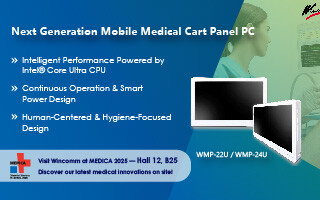Results of the 2014 Embedded Market Study
December 16, 2014

Slide show -- For the first time, Embedded Computing Design undertook a study to better understand things about how you work. Specifically, we looked...
Slide show
—
For the first time, Embedded Computing Design undertook a study to better understand things about how you work. Specifically, we looked at your design habits, the choices you make for hardware and software, how you find your design-related information, and so on.
I’ve put together a subset of that study, the questions I thought would be of most interest to you. Scroll through and you can see the questions and the responses, complete with my commentary. I’d love to hear your thoughts as well. Do you agree, disagree, or something else?
—
1. My current embedded project is programmed mostly in…
The biggest surprise here is how many people are still coding in Assembly. I wonder how many of those are using automated tools to assist in the coding process.
http://share.opsy.st/548b588970425-survey1.jpg
—
2. What amount of your design time is spent on the following stages…
While the “test and debug” stage is still the highest number, it’s actually smaller than what it’s been in the past in studies like this one. I always felt (maybe wrongly) that if designers would simply spend more time in the earlier stages, they’d be able to reduce the time needed for test and debug.
http://share.opsy.st/548b589eafe7e-survey2.jpg
—
3. In general, what sources of information do you consult to research your embedded design decisions?
Interesting dynamic here. While the number one response is (and always has been) “the guy in the next cubicle,” it’s amazing how close the number two response – search engines – now is. The Google phenomenon has nearly surpassed real people.
http://share.opsy.st/548b58b02f94a-survey3.jpg
—
4. My current project uses…
An internally developed OS is shrinking. Halleluiah.
http://share.opsy.st/548b58bc034a3-survey4.jpg
—
5. What are the most important factors in choosing an OS/RTOS?
Hardware compatibility, ease of use, and availability of drivers. No surprises there.
http://share.opsy.st/548b58c78802e-survey5.jpg
—
6. What are the most important factors in choosing an embedded processor?
Isn’t it nice that “the chip’s cost” isn’t at the top of the list? It’s not even in the top five.
http://share.opsy.st/548b58d4ae2f2-survey6.jpg
—
7. Are you working on a project that’s intended for the Internet of Things?
I find this interesting for one reason: categorization of products. I’d be willing to bet that if the question was something along the lines of “will your current project communicate with the outside world,” the response would have been an overwhelming “yes.” I feel that people may not associate their products with IoT, even though that’s what they really are.
http://share.opsy.st/548b58e048fba-survey7.jpg
—
8. Pick the top three system/design constraints/features for your current project.
And finally, let’s crank up the performance, but make sure it’s reliable.
http://share.opsy.st/548b58ec1cf7d-survey8.jpg





